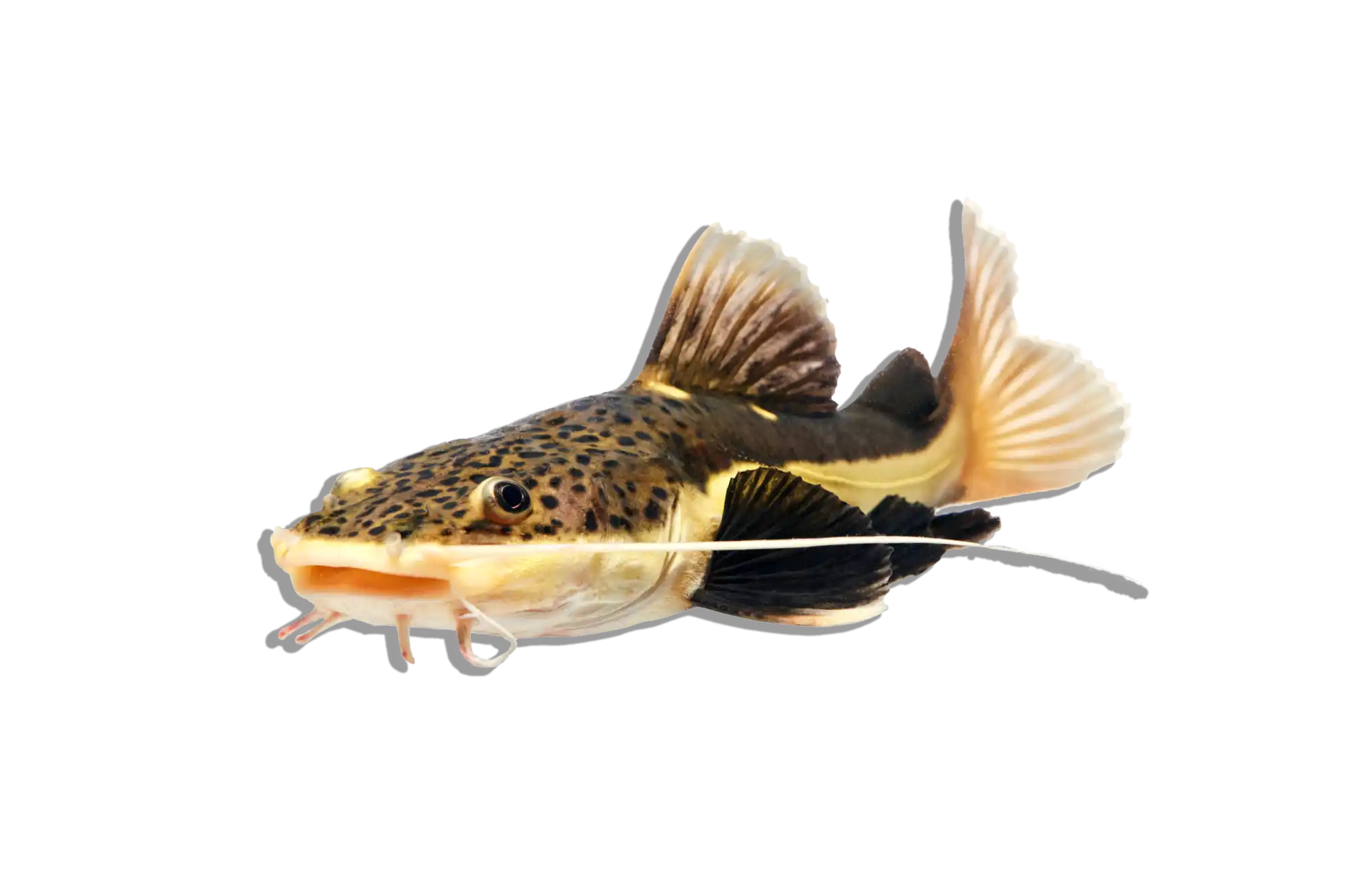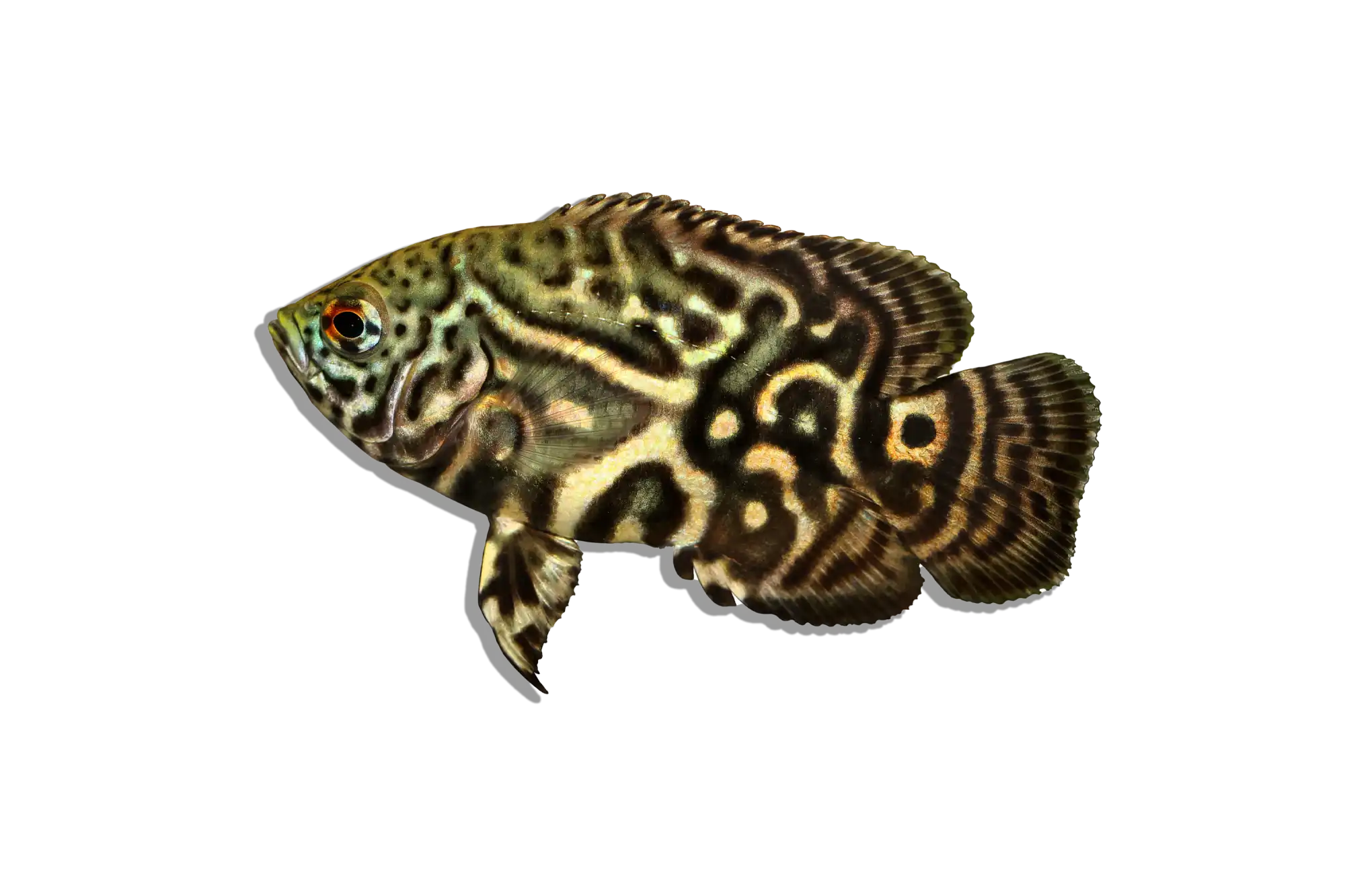Description
Common Name: Black Belt Cichlid
Scientific Name: Vieja maculicauda
Other Names: Paratheraps maculicauda, Red-Faced Cichlid
The Black Belt Cichlid is a striking and robust freshwater fish known for its vibrant coloration and distinct black band that runs horizontally across its body. This species exhibits sexual dimorphism, with males often displaying more intense colors and longer fins compared to females. Their coloration includes a mix of metallic blues, greens, and reds, with a prominent black stripe, giving them their common name. The Black Belt Cichlid has a sturdy, oval-shaped body and a distinctive nuchal hump on the forehead, which becomes more pronounced as the fish matures.
Habitat and Distribution: Black Belt Cichlids are native to Central America, specifically found in the rivers and lakes of Honduras, Nicaragua, and Costa Rica. They inhabit slow-moving or still waters with muddy or sandy bottoms, often among submerged vegetation and debris. These environments provide ample hiding spots and foraging opportunities. The natural habitat of Black Belt Cichlids is characterized by warm, slightly alkaline waters with moderate flow and abundant organic material.
Size and Lifespan: In the wild, Black Belt Cichlids can reach lengths of up to 12 inches (30 cm), while in captivity, they typically grow to around 10 inches (25 cm). Their lifespan can range from 8 to 10 years, depending on the quality of care and living conditions. Providing a spacious tank, a balanced diet, and stable water parameters can help maximize their lifespan.
Diet and Behavior: Black Belt Cichlids are omnivorous and have a varied diet that includes plant material, invertebrates, and small fish. In an aquarium setting, they can be fed a diet of high-quality cichlid pellets, supplemented with frozen bloodworms, chopped raw tilapia, and vegetable matter such as spinach or peas. These fish are known for their aggressive and territorial behavior, especially during breeding periods. They are active swimmers and can be quite boisterous, requiring ample space to establish territories.
Breeding and Reproduction: Black Belt Cichlids are substrate spawners and exhibit strong parental care. During breeding, males display vibrant colors to attract females and establish dominance. After selecting a suitable spawning site, usually a flat rock or a pit dug in the substrate, the female lays her eggs, which are then fertilized by the male. Both parents guard the eggs and the resulting fry aggressively, ensuring their safety from potential predators. In captivity, providing a separate breeding tank can help increase the success rate of raising fry.
Aquarium Care and Tank Requirements: To accommodate Black Belt Cichlids, a large aquarium of at least 75 gallons is recommended. The tank should include plenty of hiding spots created with rocks, driftwood, and robust plants to help reduce aggression and establish territories. A sandy substrate mimics their natural habitat and allows for natural digging behaviors. Filtration should be robust to maintain water quality, and regular water changes are essential to keep parameters stable.
Ideal Tank Mates: Due to their aggressive nature, Black Belt Cichlids are best kept with other large, robust fish species. Suitable tank mates include other large Central American cichlids, plecos, and large catfish. Smaller or more timid fish should be avoided, as they may be harassed or injured by the Black Belt Cichlid.
Difficulty Level: Intermediate. While they are hardy and adaptable, their aggressive nature and size require careful tank management and an understanding of cichlid behavior.
Water Parameters:
- Temperature: 75-82°F (24-28°C)
- pH: 7.0-8.0
- General Hardness (GH): 10-20 dGH
- Carbonate Hardness (KH): 4-10 dKH
- Ammonia: 0 ppm (ideal), up to 0.25 ppm (max)
- Nitrite: 0 ppm (ideal), up to 0.25 ppm (max)
- Nitrate: <20 ppm (ideal), up to 40 ppm (max)
Additional Information:
- Black Belt Cichlids are known for their striking appearance and dynamic behavior, making them a popular choice among cichlid enthusiasts.
- Their aggressive nature requires careful planning when selecting tank mates and designing the aquarium layout to minimize conflicts.
- In the wild, Black Belt Cichlids contribute to the ecosystem by controlling invertebrate populations and helping to maintain the balance of aquatic plant life.
- These cichlids are often used in breeding programs to enhance color and robustness in hybrid cichlid varieties.






















